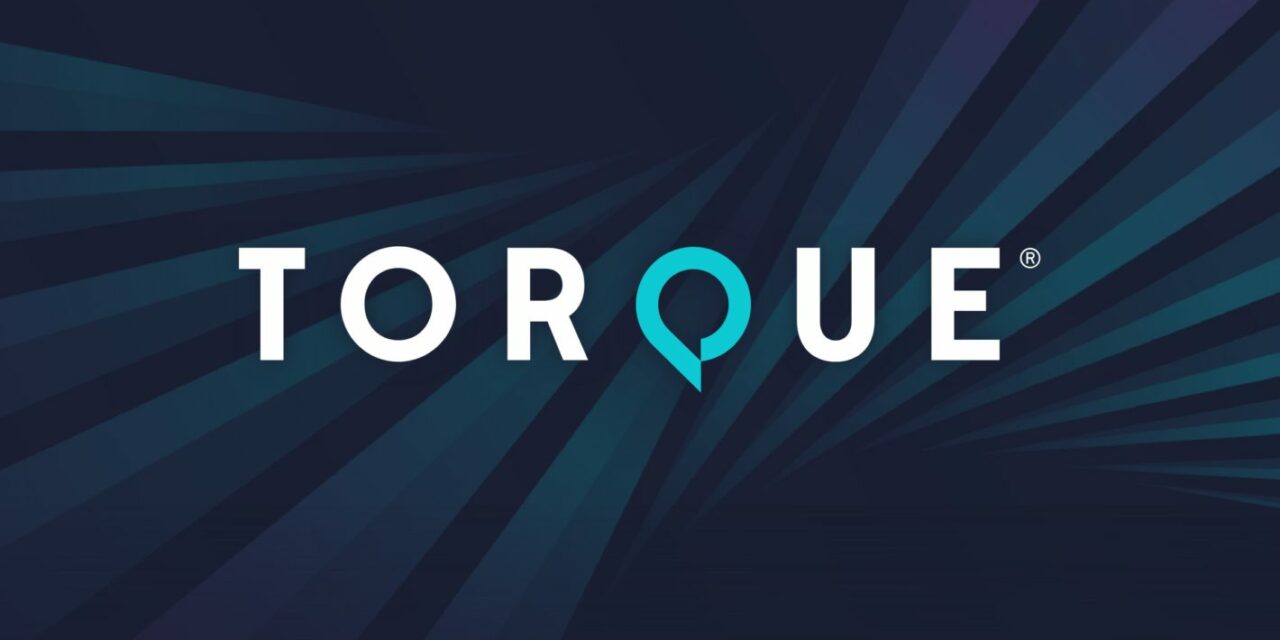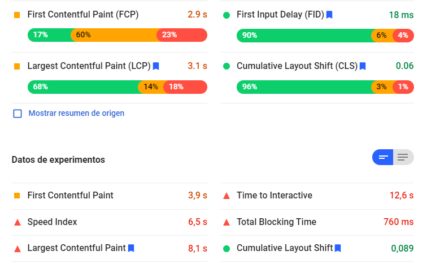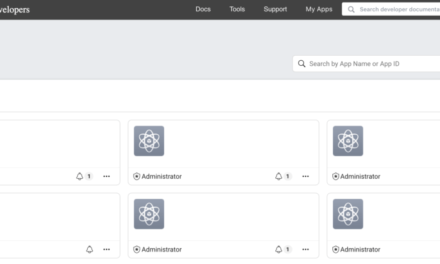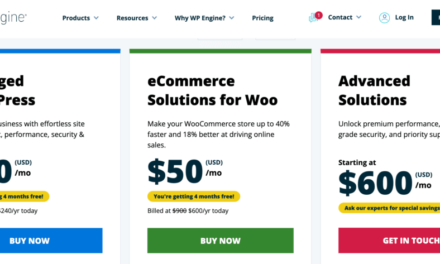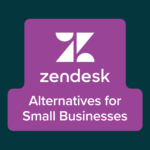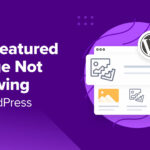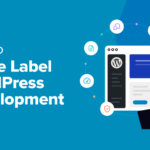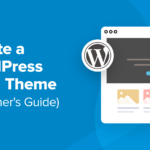Welcome to Press This, the WordPress community podcast from WMR. Each episode features guests from around the community and discussions of the largest issues facing WordPress developers. The following is a transcription of the original recording.
Powered by RedCircle
Doc Pop: You’re listening to Press This, a WordPress community podcast on WMR. Each week we spotlight members of the WordPress community. I’m your host, Doc Pop. I support the WordPress community through my role at WP Engine and my contributions on TorqueMag.io where you can also find transcribed versions of each of these episodes, so be sure to check that out. You can subscribe to Press This on RedCircle, iTunes, Spotify, or your favorite podcasting app. You can also download episodes directly from WMR.fm.
Now it is October of 2023, and Halloween is just within arm’s length. I can reach out and touch it. And I’m already planning my Halloween costume. And as I’m doing that, folks who have eCommerce sites, hopefully, are putting the final touches on their shops in preparation for a huge time of the year, a giant, sudden boom in online sales.
It’s been a while since we’ve talked about WooCommerce on this podcast. So I’ve invited Josh Dailey to come and catch us up on what’s new in Woo. Josh is a senior product marketing manager at WP Engine, and he’s also an expert in the world of WooCommerce. Welcome to the show, Josh.
Josh Dailey: It’s good to be back on with you, Doc. Thanks for having me.
DP: Have you thought about your Halloween costume for this year yet?
JD: My goodness, I have not spent a lot of time on that. I’ve got five kids, and so we spend more time on their costumes.
DP: I’m excited to talk to you about, not Halloween, but about eCommerce and what’s new at WooCommerce. Cause like I said, we haven’t talked about this specific subject, I know, in a while on the show. So I know a lot’s happened, and I know that you’ve also been working on a lot of eCommerce features at WP Engine, which we can talk about at the end of the show.
But for right now, I think as we’re recording this episode, it’s like a day after WooSesh, a two-day virtual conference for WooCommerce store builders. And there were a lot of great takeaways at WooSesh. But I think the main thing really you and I can kind of chew on for a little bit is the State of the Woo from WooSesh. Can you tell us first off, like what is the State of the Woo?
JD: Yeah, the State of the Woo—the CEO and a few of his product leads came on and shared insights on, you know, where WooCommerce is at and where it’s headed into the future. The things they’re working on, the things they’re prioritizing at the product level, and to drum up support at a community level as well.
And so it was good to kind of hear cause I was able to watch virtually last year as well and to see what they accomplished throughout the year and to make the product better and the solution, you know, continue to grow and advance, but then to see where their head space is at going forward.
DP: And, you know, you already mentioned a key takeaway at community, the word “community” here, which in WordPress, we hear all the time. And in WooCommerce, I don’t know, it’s not necessarily something I think about with WooCommerce—obviously, there is a community of WooCommerce users, but it’s not like, the community of WordPressers where we’re talking about helping transcribe talks and committing to core and things like that. I feel like community are two different things, but it seems like WooCommerce is really focusing on community in their talk this year. Can you, can you talk about the attempts they’re making to engage their community and maybe test new features with them?
JD: Yeah. So in particular, there’s some big things that take place or big changes that take place in the code base. And they need people to test that stuff and to really experience it so that they can improve on how it serves the millions of sites on it.
So like right now, think about this, they have 4.4 million live websites. That’s what they’re talking about, that are using WooCommerce at some capacity for their stores, and 33 percent of the top 1 million online stores are powered by WooCommerce.
So, when they make a change, an adjustment, it needs to be rock solid, right? And this is not just like, somebody’s blog, but their livelihood in a lot of cases—the way that they’re monetizing their website is through WooCommerce.
And so, when you think about the way that they need involvement is to make sure that when they’re getting ready and building out new features, these features are going to add a ton of value to the merchants. You know, this is going to add a ton of value to those stores so that they can focus on what is bringing them revenue.
DP: And Josh, can you let me know your vibe check here when someone uses WordPress, I feel like they’re maybe joining a community and kind of part of something I feel like they may not be fully aware of its open-source nature, but the expectations I don’t think are quite as high as when they’re a WooCommerce user—maybe they think of that as a tool, and it’s a service, and there’s maybe even money going to WooCommerce. So am I right in kind of thinking that that community may not think of itself as wanting to work for free or, you know, like wanting to be involved in the kind of help of free labor for WooCommerce?
JD: Yeah, I think that’s a fair thing to say. There’s some things that I look at as… Probably there’s three things that I’ve narrowed down as something that every eCommerce store cares about. They wanna sell more, they want their products easier to discover, and they want their site to be easier to manage, their store—they don’t want to be thinking about the technical side of their store as much as, does this just work for me?
And so, the pool of people that want to participate at the open-source level for a store itself is usually the developer, the agency. These are the types of people that are going to care about the open-source nature of it.
The merchant is going to be more invested in their store working properly and functioning. And so they don’t want to just be a free beta tester a lot of times.
DP: And of course, that being said, if they are offering help, they are probably improving a tool in a way that benefits them. So it’s not necessarily they’re, you know, doing free labor for no reason. It’s very much a two-way thing.
So if someone does, if a shop owner does want to get involved with this call to action to, you know, be part of the community and help test things, what is WooCommerce specifically asking them to do?
JD: Yeah. I would say get involved in their Slack. They have a Slack available and we could probably put that into the show notes, I’m assuming. And then there’s following their blog is a good way to do that, their developer blog.
For example, this year a huge initiative that they covered in the State of the Woo was the high-performance order storage, and this is going to be a massive pivot away from the way that data is stored and accessed for eCommerce sites or WooCommerce sites.
Because right now, all the data is stored in the same database table as WooCommerce. And this has gone live and is available now, but it does change the way that different plugins interact with that content as well, right?
So, you’re dealing with a big shift at the core of how the content is being stored and managed, and that’s the stuff that once it’s released and available to the public has to be able to be rolled back, but there’s huge value in that working.
The high-performance order storage is massive for scaling stores, and how things are migrated and stored and content is and there’s a huge performance benefit. And so if they’re, if we’re wanting to keep up with SaaS products like Shopify or Wix or those things, we have to be continually evolving the base of the core of WooCommerce.
DP: And, is this basically come to our site and download this early version of Woo, or is there like a GitHub repository involved and kind of expectations of knowing how to use Git?
JD: Yeah, there’s the GitHub repository, but the high-performance order storage is now available, so it is the default when you turn on or spin up a WooCommerce site, but you have to go in and toggle Control if you already had an existing site to switch to that, and so there’s some testing involved there and then being able to provide feedback.
DP: Well, we’re going to take a quick break. And when we come back, we’re going to pick up our conversation with Josh Dailey about what’s new in Woo. And we’re going to talk about Woo Express and headless Woo and all sorts of new features that are coming to Woo. So stay tuned for more after the short break.
DP: Welcome back to Press This, a WordPress Community Podcast. I’m your host, Doc Pop. Today, I’m talking to Josh Dailey, Senior Marketing Manager at WP Engine. We’re talking about WooCommerce through the eyes of State of the Woo, which just happened. There was a lot of great stats, a lot of good look into the future of WooCommerce, and thus, into the future of 33% of the top 1 million online stores, or the future of 4.4 million live websites that use Woo. Boy, those are amazing stats.
Josh, you had just talked about testing and how WooCommerce at WooSesh was really pushing for people to get involved and to help test new features.
Now I want to talk a little bit about some of the new things that might be new to some listeners. Let’s talk about WooExpress and what’s happening there. Can you give us an introduction to Woo Express and then tell us about some changes?
JD: I would just think about Woo Express as, I mean, this is a really exciting thing for us because it’s opening up the—it’s simplifying, it’s taking away the complexity of setting up WooCommerce, and really putting it up against a shop in a box SaaS like Shopify, and so this is exciting because it targets an entry-level beginner market and allows them to experience WooCommerce and a whole new audience to WordPress. Maybe somebody who didn’t necessarily know about WordPress, know about the community is familiar with it, but wants to get a store up and running.
That’s what Woo Express is. It’s a different interface, a different user experience, a different setup experience with some of the most-used add-ons and extensions of WooCommerce already baked into it so that somebody can just spin up a site quickly.
DP: You mentioned that Woo Express sort of acts as a beta testing group for some of the new features and they—it sounds like they push those features rather than me like getting another extension. It sounds like Woo Express is sort of like, here’s a feature, here’s a feature, here’s some AI for you to play with and they just kind of like roll it out and I guess users just test it out, right?
JD: Yeah, I would say less than a beta testing, it’s more like a focus group of stores, so… A lot of times what happens with development is you get disconnected from the actual end user’s experience and you build what you think somebody wants versus what they actually need. And I think in this case, what WooCommerce has done is to create a really condensed group that they can use to say, “what is it that eCommerce or online stores are looking for? What are merchants needing?”
And being able to provide those tools and be a little bit more forward-thinking, and then to bake those into core when they’re a little more battle-tested a little bit, you know?
DP: Well, let’s, let’s move on a little bit. You can’t have any sort of eCommerce without payments and that is—payments is a difficult thing for a lot of people to get right? What’s new in the world of WooCommerce and expanding payment options?
JD: Yeah, so they’re just mostly expanding out the functionality that they talked about last year and continuing to add different country support is what I heard inside of that. Some of the stuff I’m kind of excited about is the different ways that payments are being integrated at a platform level, even at WP Engine, like we’re developing partnerships with Stripe.
And so we have a deep Stripe Connect integration that just simplifies that setup process. And I think that’s also what WooCommerce is trying to do is again make it more accessible, faster to entry. They were talking about the amount of clicks that are reduced in setup.
And so things like buy now, pay later, different payment options depending on what country somebody’s in. So, really, what’s exciting about it, you can talk about payments all day, but it really is the internationalization or going outside of the country that you’re in and being able to sell anywhere in the world. Taking your store global, I guess, you know?
That’s what gets exciting about payments to me is like, you can spin up an integration and have one thing but the more add-on countries, banks, payment methods, payment options, things like buy now, pay later that are being integrated, the more opportunities to sell globally you have.
DP: All right. I feel like AI has been kind of mentioned a few times here. I’m kind of hesitant to get into it because I feel like oftentimes the AI announcement in these things is oftentimes, “oh, we’ll help you write some meta descriptions for SEO purposes, or we’ll help you fill out descriptions.”
And I’m so underwhelmed by hearing so many AI things at this point. I’m just like, yeah, everybody’s adding these kinds of things. It’s kind of mandatory now. Is that, is that sort of what they’re doing with AI? Or is there something I’m missing that WooCommerce is experimenting with in that space?
JD: No, it’s definitely all experimental still, right? Like for everybody, it’s not a knock on Automattic and what they’re trying to put into Woo and all of that, I think is—they’re really taking a forefront approach to experimentation on that and getting features out.
But one of the ones that I thought was probably most exciting from a UX experimentation is being able to drop in your store’s information and then them spinning up a block-based site or a full site editing site for you as a template for you to get started with.
So kind of skipping over that template phase where you just, everybody gets the exact same template. This could actually generate a site for you that might be a better starting point for your unique experience. So very personalized. Yeah.
DP: Yeah, there’s definitely a lot of people are trying to figure out how to make that onboarding. A lot of WooCommerce’s and WordPress hosts and things like that are trying to make that installation as smooth as possible. So that definitely seems to be kind of one of the ways that we’re seeing AI get used now and that’s, that’s pretty cool.
And hopefully maybe there’s something, like later on, maybe a year from now, we’ll be talking about how it reduces the number of clicks it takes for someone to order something while cutting down on fraud or something like that. That’ll be pretty exciting in the future, but for now it sounds like it’s onboarding is sort of a nice, smoother process.
Let’s move on to HPOS, which, um, headless, progressive on… I don’t know what that is. What is HPOS?
JD: Oh yeah, that’s what we were talking about at the beginning there. That’s the high, high-performance order storage. Yeah. So that’s what the HPOS is. And it’s just another way of looking at data delivery.
This is, this has been a big ask for a long time, but it’s a huge lift by the team. And I—we started talking about this last year, WP Engine has been looking at this since they started working on it, because it is going to be a game changer from a performance and scalability perspective to have separate data tables handling different products.
DP: I guess my final question here is what about headless eCommerce? Is there anything Woo is kind of bringing to the table new here? Cause I’m sure they have some offerings in that space.
JD: You know, they didn’t talk too much into the headless space. I think—when I think about headless eCommerce and the role that that’s playing right now, it’s more when you are, I’d say scaling up, your WordPress site, the headless components. Did you hear something specific?
DP: No, I didn’t. I just kind of keep thinking about, you know, sitting in the back of a cab or something, and there’s kind of a storefront and sometimes, you know, on a screen in front of me, and I’d just been thinking about like, oh, that’s probably a headless integration for like United Airlines or something where they, you know, they just kind of have this like headless version of their site that allows me to order. It’s—that’s a bizarre example, but I’ve been thinking about headless eCommerce a bit lately.
And I was just curious if they had anything in that space that was new.
JD: Yeah. So they are more focused on the experience right now, and it seems like that entry point. And then headless is a forward-thinking opportunity. And I think when you start thinking of stores that are doing maybe 5 million in revenue a year and they’re starting to look at how they’re going to continue integrating with WordPress and that experience, but also needing to go cross-platform like you said.
Which, it was cool seeing some of those plugins. I think that might be the closest component, but some of the partnerships and plugins they had created to integrate things like, what was it? Tik Tok? Yeah. So like that kind of stuff, being able to sell where the customer is at across multiple different platforms, I think is a huge thing, but I don’t know that I’d call that “headless” specifically in that implementation.
DP: Well, we’re going to take our final break here and when we come back, we’re going to wrap up our conversation with Josh who mentioned some of the stuff that’s going on at WP Engine in terms of eCommerce and improvements there.
So when we come back, we’re going to talk about what Josh has been working on and we’ll see you soon. So stay tuned for more after the short break.
DP: Welcome back to Press This, the WordPress Community Podcast on WMR. I’m your host, Doc Pop. Today, I’m talking to Josh Dailey, and we’ve talked about some of the stats that we heard from the State of the Woo at WooSesh. And we’re talking about some of the new features that WooCommerce is rolling out and encouraging their users to test.
And now I’d like to pivot a little bit, Josh, to what you’ve been working on and give you a chance to talk about, I know you’re excited about—I could hear it in your voice when we were talking—about eCommerce and payments and things like that. Why don’t you tell us about some of the stuff you’re working on now that you’re excited about?
JD: Yeah, I think the things that get me up in the morning is the—you know, continuing to push the boundaries of what’s possible with WooCommerce, right? And really focusing on performance, shopper concurrency, high volume traffic, you know, the ability to take that store and go global with payment solutions, that kind of stuff.
And so our solution over the last two years, in particular, has evolved to include, you know, a special kind of cache solution, we call it EverCache for WooCommerce and this—I don’t know how familiar people who are working in WordPress are, but understanding the difference and nuance of handling dynamic content versus static content.
A lot of blogs, you know, you can cash everything and it makes it really fast and performant, but on an eCommerce store, with WooCommerce in particular, cache stops at a certain point. That really breaks down the buyer journey. It slows down the buyer journey. And so we’re doing things to say, how can we make that buyer journey from start to finish a better experience?
So we’ve been able to really change the performance game around dynamic content in the complete buyer journey. And then we’ve also been able to solve the cart fragments problem. And if you’re in the WooCommerce space, you’re going to go, “what? man, I know that problem,” but essentially the ability to keep personalized shopping experiences with updated cart totals and checkout, that kind of stuff, happening without the slowing down of performance over time.
And the ability to be able to serve more concurrent shoppers. So not just thinking one or two shoppers, but having 40, 50 shoppers on your site. And those are big things. Especially around Black Friday, right? So this is a big time for our customer base to be getting their stores ready. And I hope you all are doing that and have a good checklist in place to get there.
And then, obviously, we have our Instant Store Search feature: the improved shopping experience, which is powered by ElasticPress. And then this year it was a lot of work for us to really get the Stripe Connect Integration dialed in and we just released six additional payment options that cover the European Union and countries in Europe. Thinking Germany, Austria, and Poland, and just all over the world now to be able to accept payments easier and integrate without having to think too hard about it. So there’s just a lot of good stuff happening for us in the eCommerce space and we’re continuing to expand those efforts out.
And then lastly, I would say it is our headless work that we’ve done with Atlas. We’ve been a forerunner in that in really looking at what does it mean to be able to move freely between platform of choice?
And there’s been some fun work even with other commerce solutions like BigCommerce and Shopify to see how do we make sure that people stay with WordPress, no matter what platform they choose—becoming a bit more platform agnostic and being able to make those selections, but using the best in class of WordPress and what that means as well.
So, a lot of exciting stuff on WooCommerce, always going to be our bread and butter. It serves, you know, 90 percent of sites using WordPress choose WooCommerce. And that’s where we’re going to continue to grow and scale. But we will have solutions as people go to those enterprise markets as well.
DP: Well, Josh, I really appreciate your time today. Thanks for catching us up on the world of Woo. Can you tell us how to reach you if anybody has questions or just wants to follow what you’re working on these days?
JD: Yeah, I will, I—we always stumble through saying X now, right, over Twitter? But I’m on X and, and you can find me @JoshDailey and I spell Dailey a little funny—I got both the “I” and the “E” in there, so “D-A-I-L-E-Y” and you can find me that way. And yeah, I said, that’s pretty much the key way for my personal thing. I’m on LinkedIn as well, look for me there. And then the last thing I would say is follow WP Engine because that’s most of where I’m, posting content and talking.
DP: Right on. Well, thanks so much for joining us today. Next episode, we are going to be talking to Matthew Viette and David Cavins from BuddyPress about—I believe about integration into the Fediverse, which was also covered on a recent episode, but BuddyPress has some exciting stuff in the works. So stay tuned next week to learn about that.
Thanks for listening to Press This, a WordPress community podcast on WMR. You can follow my adventures on Twitter at @theTorqueMag, that’s @theTorqueMag, and you can subscribe to Press This on RedCircle, iTunes, Spotify, or your favorite podcasting app, as well as download directly from WMR.fm.
Again, I’m your host, Dr. Popular. I support the WordPress community through my role at WP Engine, and I love spotlighting members of that community each and every week on Press This.

